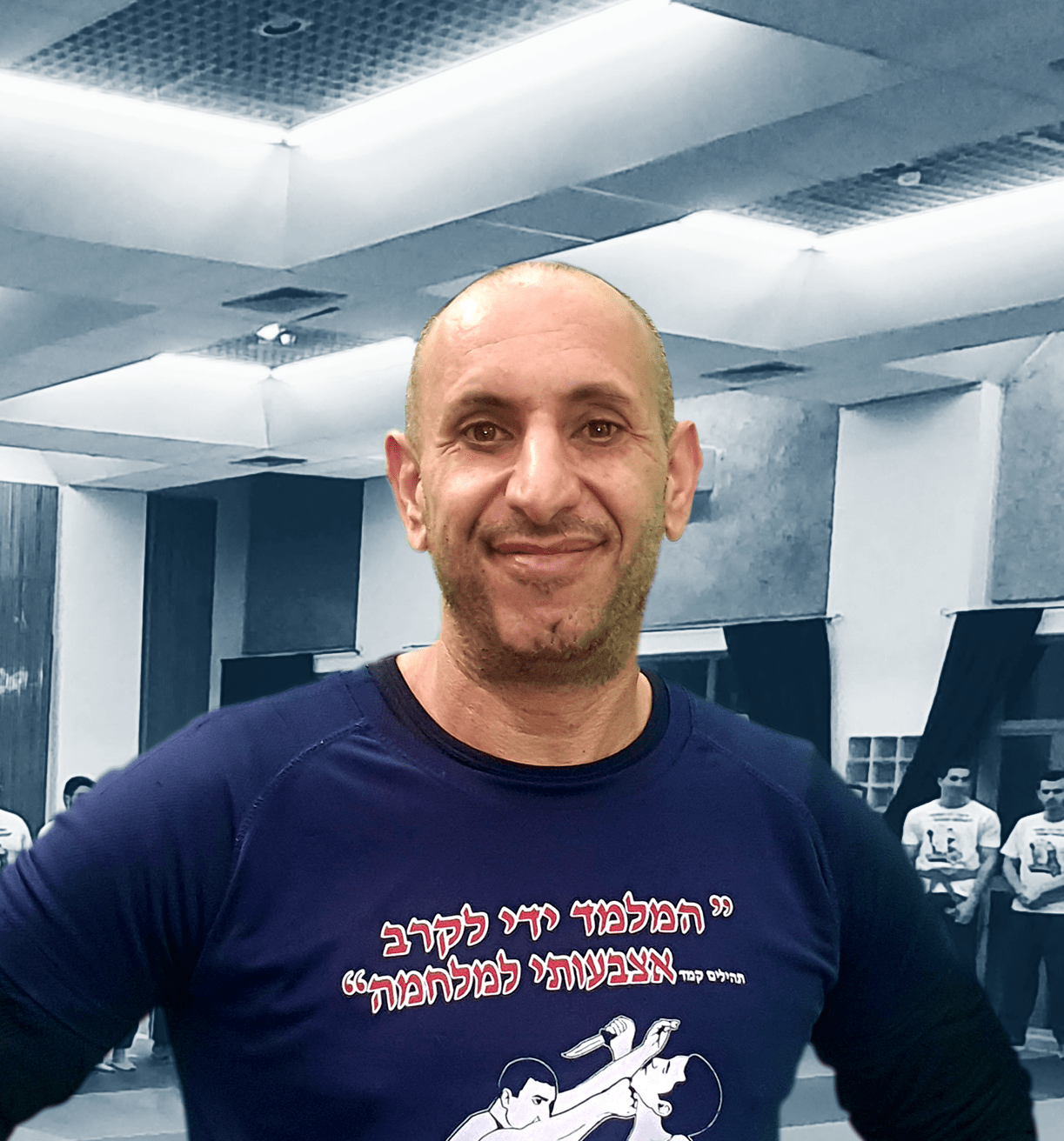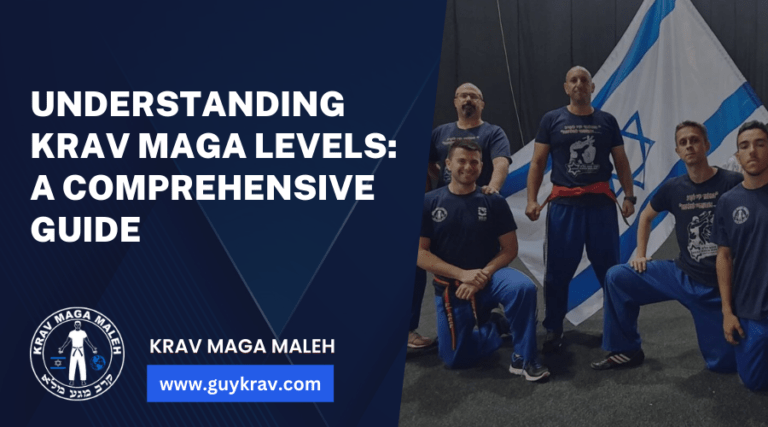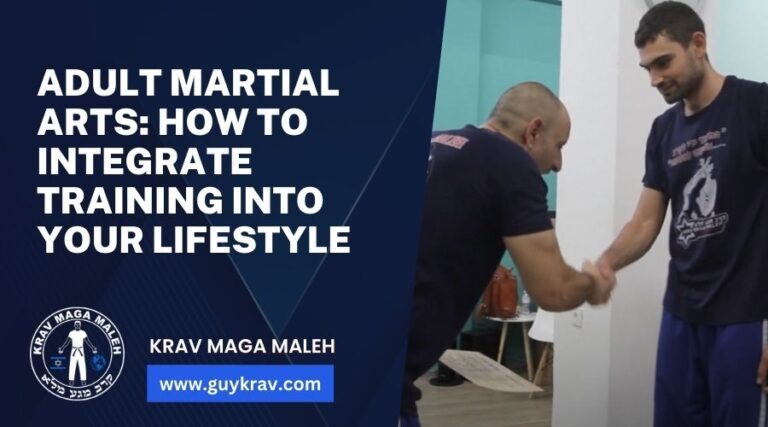Imagine walking down a quiet street when suddenly you’re faced with a threatening situation—a knife attack. What would you do? Learning the skill of defense from knife attack is not just about physical techniques; it’s about empowering yourself to react quickly and effectively in life-threatening situations. This crucial skill can be the difference between feeling vulnerable and being confident in your ability to protect yourself.
In this article, we’ll dive deep into the world of Krav Maga, a martial art known for its practical approach to self-defense, focusing specifically on how to defend against knife attacks. You’ll discover:
- The Basics of Knife Defense: Understand the foundational principles that can help you stay safe.
- Essential Techniques and Strategies: Learn the moves and mindset needed to defend yourself effectively.
- Training Tips and Best Practices: Get insights on how to train effectively, whether you’re a beginner or an experienced practitioner.
By the end of this read, you will have gained valuable knowledge on how to handle dangerous situations with confidence. Ready to empower yourself with these life-saving skills? Keep reading to learn how to transform fear into readiness with the art of defense from knife attacks.

Understanding Knife Attacks
Knife attacks can happen under various circumstances, making it crucial to recognize the common scenarios where they might occur. By understanding these situations, individuals can better prepare themselves to respond effectively.
Common Scenarios for Knife Attacks
Knife attacks often occur in close quarters where escape options are limited. These scenarios include:
- Public transportation: Crowded spaces can make it easier for attackers to get close without drawing attention.
- Alleyways and parking lots: Isolated areas provide attackers with the opportunity to confront individuals without witnesses.
- Domestic disputes: Unfortunately, household conflicts can escalate to the point where knives are involved.
Being aware of these environments and remaining vigilant can significantly reduce the risk of being caught unprepared.
The Psychology Behind Knife Attacks and How to Stay Calm
The psychological impact of being involved in a knife attack can be paralyzing. Understanding the attacker’s mindset and maintaining your composure are key to defending yourself effectively. Here are some tips to help you stay calm:
- Breathe deeply: Slow, deep breaths can help maintain a clear mind and reduce panic.
- Focus on survival: Concentrate on the immediate actions you need to take to protect yourself rather than the fear of the weapon.
- Use verbal de-escalation: If possible, speak calmly to the attacker to de-escalate the situation. This can sometimes prevent the conflict from escalating.
Staying calm not only helps in managing the situation but also in making rational decisions to defend yourself effectively.
Legal Considerations in Knife Defense
Defending yourself during a knife attack involves not just physical but also legal considerations. Understanding your local self-defense laws is crucial:
- Proportionate response: Always ensure that your response is proportional to the threat. Using more force than necessary can lead to legal repercussions.
- Duty to retreat: Some jurisdictions require you to retreat if possible before using force. Knowing whether this applies to you is important.
- Use of lethal force: In extreme cases, using lethal force might be justified if there is an imminent threat to life. Legal advice and training can help clarify these situations.
Educating yourself about these legal aspects can ensure that your defensive actions remain within the bounds of the law, providing you not only with physical but also legal protection.
Basic Principles of Knife Defense in Krav Maga
Understanding the basic principles of knife defense in Krav Maga is crucial for anyone looking to enhance their self-defense skills. This section delves into the key stances and movements, the importance of situational awareness, and the defensive mindset necessary for an effective response.
Key Stances and Movements Essential for Defense
In Krav Maga, your stance and movement are your first line of defense against a knife attack. Here are some fundamentals:
- Neutral stance: Stay balanced and ready to move in any direction. This stance helps you react swiftly and effectively.
- Defensive movements: Learn to block or deflect attacks using your arms and legs. Quick reflexes are vital in minimizing injury.
- Counterattacks: Once you’ve blocked an attack, knowing how to swiftly counterattack can disable the assailant and end the threat.
Each movement is designed to be instinctive and effective, minimizing the need for complex thought during a high-stress situation.
The Role of Situational Awareness in Preventing Attacks
Situational awareness is key to avoiding or mitigating knife attacks before they happen:
- Stay alert: Always be aware of your surroundings, especially in high-risk areas.
- Notice anomalies: Recognize unusual behavior or potential threats before they escalate.
- Escape routes: Always know the nearest exits or safe areas to retreat if needed.
By staying vigilant, you can often prevent confrontations or position yourself advantageously should one arise.
Introduction to the Defensive Mindset Necessary for Effective Response
Developing a defensive mindset is as important as physical training:
- Mental preparedness: Train your mind to stay calm and think clearly under pressure.
- Threat assessment: Quickly determine the level of threat and the most appropriate response.
- Confidence through training: Regular practice builds skill, preparedness, and confidence, enabling a more effective defense.
A well-prepared mind empowers you to handle intense situations more competently and increases your chances of safely navigating a knife attack.
Core Techniques for Defending Against a Knife Attack
Mastering the core techniques in Krav Maga enhances your ability to defend against knife attacks effectively. This section covers essential defensive moves, drills to sharpen reflexes, and techniques for disarming an assailant, ensuring you are well-equipped to handle such threats.
Defensive Moves Taught in Krav Maga (Blocks, Parries, and Redirects)
Krav Maga teaches several defensive maneuvers that are critical in knife defense:
- Blocks: Learn to use your arms and legs to block incoming attacks, minimizing the potential for injury.
- Parries: A parry diverts the direction of an attack, shifting it away from your body, providing a crucial moment to counterattack.
- Redirects: By redirecting the attacker’s momentum, you can destabilize them, giving you an advantage.
These techniques require precision and timing, making them effective tools in your self-defense arsenal.
Practical Drills for Enhancing Reflexes and Defense Capabilities
To develop quick reflexes and effective defense maneuvers, regular practice through drills is essential:
- Reaction drills: Engage in exercises that improve your ability to react swiftly to sudden threats.
- Scenario-based drills: Practice in simulated attack scenarios to build confidence and hone your decision-making under stress.
- Continuous movement drills: Keep moving to make yourself a harder target while managing distance and positioning.
Regular drilling reinforces muscle memory and instinctual reaction, critical for defense in high-pressure situations.
Instructional Insights on Disarm Techniques
Disarming an attacker is a sophisticated aspect of knife defense that should be approached with caution:
- Timing and opportunity: Identify the right moment in an attack to attempt a disarm. This usually follows a successful block or redirect.
- Control the weapon hand: Secure control over the hand wielding the knife to prevent further attacks.
- Disarm maneuvers: Execute specific techniques to safely remove the knife from the attacker’s grasp without escalating the threat.
Training under a qualified instructor is recommended to safely learn and practice these advanced techniques.

Advanced Krav Maga Strategies for Knife Defense
Building on basic defense techniques, advanced Krav Maga strategies involve combining defensive moves with aggressive counterstrikes, training in high-pressure scenarios, and integrating counterattacks efficiently. These tactics enhance your ability to not only prevent harm but also to neutralize the threat effectively.
Combining Strikes with Defense Moves
Integrating strikes with defensive maneuvers is a cornerstone of advanced Krav Maga training:
- Simultaneous defense and attack: Learn to block or redirect an attack while simultaneously delivering a counterstrike, often targeting vulnerable areas like the face, throat, or midsection.
- Flow between defense and offense: Practice transitioning smoothly from blocking to striking, ensuring you can respond fluidly and unpredictably in a confrontation.
- Maximizing impact: Focus on delivering powerful strikes that can incapacitate an assailant, allowing you to escape or end the threat.
This dual approach of defending and attacking concurrently increases the effectiveness of your responses and can be decisive in real-life encounters.
Scenario-Based Training for High-Pressure Situations
Scenario-based training simulates real-life threats, preparing you to handle intense situations:
- Stress inoculation: Train in environments that mimic the stress and chaos of an actual attack, helping you learn to maintain composure and clarity under pressure.
- Decision-making drills: Engage in exercises that require you to make quick decisions about when and how to use your skills, reinforcing the defensive mindset.
- Adaptability exercises: Face various attack scenarios to enhance your adaptability and ensure you can apply Krav Maga principles across different situations.
This type of training builds mental and physical resilience, crucial for effective self-defense.
Integrating Counterattacks in Knife Defense Situations
Effective counterattacking is vital for turning the tables on an assailant:
- Immediate response: After blocking or evading an attack, quickly follow up with counterstrikes to exploit the momentary vulnerability of your attacker.
- Use of environment: Utilize your surroundings to your advantage, whether it’s maneuvering the attacker into a less advantageous position or using environmental objects as improvised weapons.
- Control and disable: Aim to control the attacking limb of the assailant or disable their ability to continue the assault, ensuring your safety and the safety of others.
Integrating these counterattacks effectively requires practice and precision, emphasizing the need for comprehensive training and continual skill enhancement.
Training Tips for Beginners and Experienced Practitioners
Whether you are just starting out in Krav Maga or you are an experienced practitioner, continuous learning and practice are crucial for mastering knife defense. This section provides valuable training tips tailored for both beginners and advanced students to ensure consistent improvement and skill development.
Best Practices for Beginners Learning Knife Defense
For those new to Krav Maga, starting with the basics is essential:
- Focus on fundamentals: Before attempting complex techniques, gain proficiency in basic stances, movements, and awareness strategies.
- Regular practice: Consistency is key. Practice regularly to develop muscle memory, which is crucial for reacting effectively under stress.
- Seek professional training: Enroll in classes with certified Krav Maga instructors to ensure you learn correct techniques and receive feedback.
These foundational practices set the stage for effective learning and safety during training.
Advanced Training Techniques for Seasoned Krav Maga Students
Experienced practitioners should focus on refining their skills and expanding their knowledge:
- Incorporate varied scenarios: Train in different environments and with various attack simulations to enhance adaptability and readiness.
- Drill with partners: Practicing with different partners can expose you to a variety of attack styles and defensive techniques, enriching your experience and skills.
- Participate in sparring sessions: Controlled sparring allows you to test your skills in a realistic setting, helping you to improve your reaction times and strategic thinking.
These techniques help advanced students polish their existing skills and prepare for real-life situations.
Importance of Continuous Practice and Learning
Ongoing improvement is vital for both beginners and advanced students in Krav Maga:
- Update skills regularly: As techniques evolve and new threats emerge, staying updated with the latest training methods is essential.
- Feedback and correction: Regular feedback from instructors and peers helps correct mistakes and refine techniques.
- Lifelong learning attitude: Adopting a mindset geared towards continual learning can lead to mastery and confidence in your defense capabilities.
Consistent practice not only enhances physical skills but also builds mental toughness and situational awareness, which are critical in defense scenarios.
Selecting the Right Krav Maga Training Program
Choosing the right Krav Maga training program is crucial for effectively learning and applying knife defense techniques. This section will guide you on what to consider when selecting a course, the pros and cons of online versus in-person training, and some recommended schools and instructors that excel in Krav Maga training.
What to Look for in a Krav Maga Course
When deciding on a Krav Maga training program, consider the following key factors:
- Certified Instructors: Ensure that the instructors are certified and have a solid background in teaching Krav Maga. Their experience and expertise are vital for effective learning.
- Curriculum Relevance: The course should cover comprehensive defense techniques, including those specifically for knife attacks. Review the curriculum to make sure it meets your learning goals.
- Class Size: Smaller class sizes are preferable as they allow for more personalized instruction and feedback.
These elements will help you choose a program that provides the quality and depth of training necessary for mastering Krav Maga.
Online vs. In-Person Training Options
Each training format has its advantages and disadvantages:
- Online Training:
- Pros: Convenient, flexible scheduling, and can be accessed from anywhere.
- Cons: Limited physical interaction, which can be crucial for receiving direct feedback and making adjustments in techniques.
- In-Person Training:
- Pros: Direct feedback, hands-on practice, and immediate corrections help refine techniques effectively.
- Cons: Less flexibility in scheduling, and commuting may be required.
Consider your personal learning preferences, availability, and goals when choosing between online and in-person options.
Krav Maga Maleh’s Unique Approach to Knife Defense
Krav Maga Maleh stands out for its specialized approach to self-defense, particularly in knife defense training. This section explores the distinctive teaching methodologies employed by Krav Maga Maleh, showcases student success stories, and explains why this school is considered a leader in self-defense training.
Highlighting the Teaching Methodology of Krav Maga Maleh
Krav Maga Maleh’s methodology is rooted in realism and practicality:
- Real-world scenarios: Training emphasizes real-life situations to prepare students for unexpected encounters.
- Adaptive techniques: Instructors focus on teaching techniques that students can adapt to various circumstances, enhancing their ability to respond under different conditions.
- Continuous updating: The curriculum is regularly updated to incorporate new insights and techniques, ensuring the training remains relevant and effective.
These methods ensure that students not only learn self-defense but are also prepared to apply these skills effectively in their daily lives.
Success Stories and Testimonials from Students
The effectiveness of Krav Maga Maleh’s training is reflected in the positive outcomes experienced by its students:
- Increased confidence: Many students report significant improvements in their confidence levels, feeling more secure in their ability to protect themselves.
- Real-life application: Testimonials frequently highlight instances where students have successfully used the skills learned at Krav Maga Maleh to defend themselves.
- Community and support: Alumni often speak of the strong community and ongoing support they receive from the school, which continues to aid their personal growth and learning.
These stories underscore the transformative impact Krav Maga Maleh has on its students, enhancing their safety and overall quality of life.
Why Krav Maga Maleh is a Leader in Self-Defense Training
Several factors contribute to Krav Maga Maleh’s leadership in the field:
- Expert instructors: The school boasts a team of highly trained and experienced instructors who are passionate about self-defense.
- Comprehensive programs: Krav Maga Maleh offers a range of programs that cater to different ages, skill levels, and specific self-defense needs, making it accessible to a wide audience.
- Focus on empowerment: Beyond physical defense, the training emphasizes mental fortitude and emotional resilience, empowering students to handle various challenges confidently.
Krav Maga Maleh’s commitment to providing high-quality, comprehensive self-defense training makes it a leader in the field. The school’s unique approach not only teaches effective defense techniques but also builds a foundation of confidence and resilience among its students.

Taking Your Defense Skills to the Next Level
As we have explored throughout this article, mastering knife defense requires more than just physical skills; it demands a comprehensive approach that includes understanding attack scenarios, learning effective techniques, and ongoing training and mindset development. Krav Maga Maleh provides an exemplary framework for this holistic development.
Recapping our discussion, we started with the fundamentals of recognizing common scenarios for knife attacks and the psychological preparation needed to stay calm. We then progressed to learning essential defensive maneuvers like blocks, parries, and redirects. Advanced strategies were covered next, detailing how to combine these defenses with counterstrikes to effectively neutralize threats. We also emphasized the importance of choosing the right training program that aligns with your personal safety goals and learning preferences.
The journey to mastering knife defense is continuous. Regular training is critical as it helps refine your skills, ensuring you are prepared to face any situation with confidence. The mental aspect of training cannot be overstated; maintaining a calm, focused mindset under pressure is often what distinguishes a successful defense from a harmful encounter.
By committing to this path, you will not only enhance your physical capabilities but also develop the resilience and tactical acumen needed for effective self-defense. Remember, the goal of learning knife defense is not just to protect oneself but to build a foundation of safety that extends to all areas of your life.
Frequently Asked Questions
Does Krav Maga knife defense work?
Yes, Krav Maga knife defense is highly effective. This self-defense system is designed for real-world situations, emphasizing practical, straightforward techniques that can be learned quickly and applied under stress. Krav Maga does not rely on strength alone, which makes it suitable for individuals of all sizes and fitness levels. The key to its effectiveness lies in its focus on instinctive movements, situational awareness, and aggressive counteractions. By training in Krav Maga, you learn how to respond to knife attacks not only physically but also mentally, preparing you to handle high-pressure situations efficiently.
What is the best defense that you can use against an attacker waving a knife?
The best defense against an attacker with a knife is to maintain distance and escape, if possible. If escape is not an option, using Krav Maga techniques to defend oneself becomes necessary. Krav Maga teaches you to defend against knife attacks by redirecting the attacker’s motion and disarming them. The system emphasizes controlling the weapon arm, using counterattacks on vital targets, and neutralizing the threat quickly. Training regularly in these techniques enhances your ability to respond effectively, potentially saving your life in such dangerous situations.
Is a knife a bad self-defense weapon?
Using a knife as a self-defense weapon has significant legal and ethical implications. It is generally considered a last resort due to the lethal nature of the weapon and the close proximity required to use it effectively. Additionally, there’s a risk that the knife could be turned against you. Instead, self-defense experts recommend using less lethal means of protection and focusing on de-escalation techniques or defensive martial arts like Krav Maga, which provide safer and often more legal options for self-defense.
What is the best knife point for self-defense?
The best type of knife point for self-defense is generally considered to be a drop point or a spear point. These types of knife points offer a good balance between control and strength, reducing the risk of breaking or bending during use. Drop points are especially good for slicing, while spear points provide excellent thrusting capability, which can be pivotal in self-defense scenarios. However, it is crucial to remember that carrying a knife for self-defense comes with significant responsibilities and legal considerations.
Can you defend yourself with Krav Maga?
Absolutely, Krav Maga is one of the most effective martial arts for self-defense. It is specifically designed to prepare individuals for real-life situations, teaching how to respond quickly and effectively to threats. Krav Maga training includes techniques for defending against unarmed and armed attacks, including knives and guns. The system is built on natural movements and reflexes, making it easy to learn and execute under pressure. Regular training in Krav Maga can significantly improve your physical and mental preparedness for a variety of dangerous situations.
Join Krav Maga Maleh for Expert Knife Defense Training
Elevate your self-defense skills with Krav Maga Maleh. Our expert training in knife defense empowers you with techniques and mental preparedness under experienced instructors. Visit our website or contact us to find a class that fits your schedule and skill level, from beginner to advanced.
Sign up today and start mastering essential knife defense skills. At Krav Maga Maleh, gain the confidence and competence to protect yourself in any situation. Enroll now for peace of mind and security for you and your loved ones.







